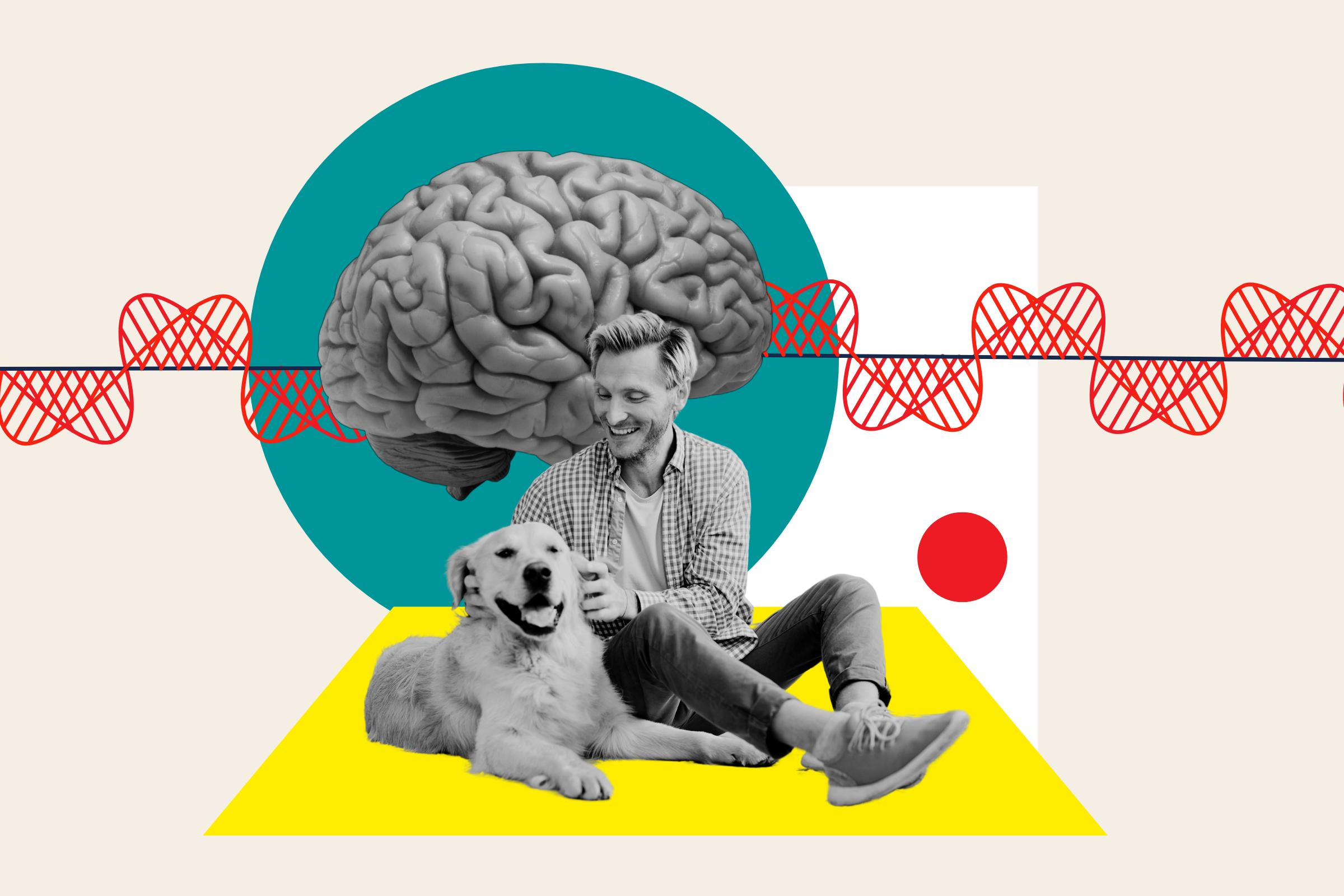Gazing into your furry friend’s eyes and giving it pets can cause your brain to synchronize with theirs, scientists have discovered.
This kind of synchronization of brain waves, known as interbrain activity coupling, has been observed previously in human-human interactions and between members of other species. But it has now been seen in human-dog pairs, according to a new paper in the journal Advanced Science.
This is the first time that an ability to synchronize brain activity was seen between two individuals of different species.
Photo-illustration by Newsweek
The paper’s authors wrote: “This study is the first to report and characterize interbrain activity coupling during cross-species interactions. Our results show that the strength, direction, and attention-associated brain regions of the interbrain activity coupling during human-dog interactions are similar to those during human-human interactions.”
Dogs have been man’s best friend for over 30,000 years, and their domestication is believed to have happened when certain wolves began to interact with human hunter-gatherer societies. As wolves were domesticated and became dogs, they became more docile, trainable and social and developed a higher tolerance for human presence and attention.
“Dogs have evolved to read, understand and respond to a wide range of human emotional states and communicative signals through behaviors, facial expressions, and even vocal tones, offering an extraordinary level of active companionship that is not often seen in other domesticated or companion animals, such as cats,” the authors wrote.
“However, the neural mechanisms underlying the distinctive and effective communication between humans and dogs are largely unknown,” they said.
In human-human pairs, as well as in pairs of mice, bats and nonhuman primates, brain activity appears to synchronize in areas including the frontal and parietal regions, both of which are associated with joint attention.
“Interbrain neural coupling was shown to reflect reciprocity in social interactions, joint attention, and the quality and outcome of social interactions,” the researchers wrote.
Using wireless electroencephalograms on humans and dogs interacting—by looking into each other’s eyes and petting—the researchers found that this synchronization also occurs between the two species.
“By analyzing electroencephalography signals from both dogs and humans, it is found that mutual gaze and petting induce interbrain synchronization in the frontal and parietal regions of the human-dog [pairs], respectively,” the researchers wrote.
This ability to synchronize brain activity was seen to strengthen as the pairs became more familiar.
“The strength of the synchronization increases with growing familiarity of the human-dog [pairs] over five days, and the information flow analysis suggests that the human is the leader while the dog is the follower during human-dog interactions,” the researchers said.
This synchronization was found to be absent if the dogs were genetically mutated and had social impairment traits similar to autism in humans.
“Dogs with Shank3 mutations, which represent a promising complementary animal model of autism spectrum disorders (ASD), show a loss of interbrain coupling and reduced attention during human-dog interactions,” the researchers wrote.
Interestingly, the effects of this autism-like genetic mutation appeared to be reversed if the dogs were given a small dose of LSD. This suggests that LSD may play a role in helping people with autism manage social interactions, although a lot more research into this link needs to be done.
“We showed for the first time that a single dose of LSD rescued impaired interbrain coupling and joint attention in Shank3 mutant dogs, suggesting that LSD may potentially ameliorate social deficits in ASD, though the mechanism underlying the rescuing effect remains unclear,” the researchers wrote.
Do you have a tip on a science story that Newsweek should be covering? Do you have a question about dogs? Let us know via science@newsweek.com.
Reference
Ren, W., Yu, S., Guo, K., Lu, C., & Zhang, Y.Q. (2024). Disrupted Human-Dog Interbrain Neural Coupling in Autism-Associated Shank3 Mutant Dogs. Advanced Science. doi: 10.1002/advs.202402493
